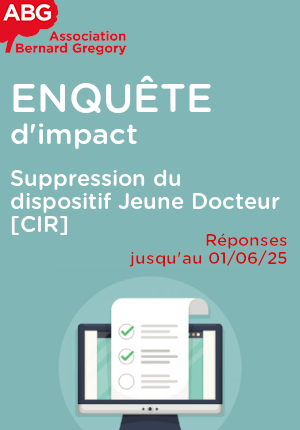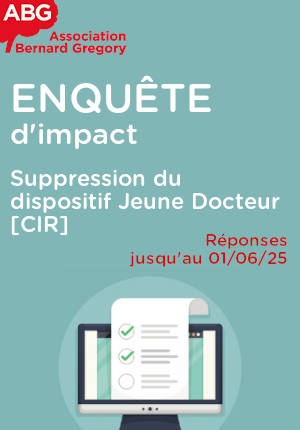Dysfonctionnements du système sérotoninergique dans le syndrome de Gilles de la Tourette : une étude multimodale par TEP, EEG et IRM // Serotonergic System Dysfunctions in Gilles de la Tourette Syndrome: A Multimodal Study Using PET, EEG, and fMRI
|
ABG-129444
ADUM-62294 |
Thesis topic | |
| 2025-03-13 | Public funding alone (i.e. government, region, European, international organization research grant) |
Sorbonne Université SIM (Sciences, Ingénierie, Médecine)
Paris Cedex 13 - France
Dysfonctionnements du système sérotoninergique dans le syndrome de Gilles de la Tourette : une étude multimodale par TEP, EEG et IRM // Serotonergic System Dysfunctions in Gilles de la Tourette Syndrome: A Multimodal Study Using PET, EEG, and fMRI
- Biology
EEG, TEP imagine, serotonine , troubles de mouvements ,
EEG, PET imaging , serotonine, mouvement disorders
EEG, PET imaging , serotonine, mouvement disorders
Topic description
Le syndrome de Gilles de la Tourette (SGT) est un trouble neuropsychiatrique caractérisé par la présence de mouvements anormaux, appelés tics moteurs et vocaux, souvent associés à des comorbidités psychiatriques telles que le trouble obsessionnel-compulsif (TOC), qui se manifeste par des comportements répétitifs.
Bien que le rôle de la dopamine soit bien documenté dans cette pathologie, le système sérotoninergique (5-HT) pourrait également jouer un rôle clé dans la régulation des circuits cortico-striato-thalamo-corticaux, impliqués dans l'expression des tics et des comportements compulsifs. Cependant, les études d'imagerie moléculaire menées jusqu'à présent ont donné des résultats contradictoires, rendant incertaine l'implication précise du système 5-HT dans le SGT.
Ce projet vise à explorer le rôle du système sérotoninergique dans l'expression des tics et des comportements compulsifs chez les patients atteints de SGT à l'aide d'une étude d'imagerie translationnelle et d'électroencéphalographie (EEG). Pour cela, nous utiliserons trois modalités complémentaires :
La tomographie par émission de positons (TEP) avec le radiotraceur hautement spécifique du récepteur 5-HT2A ([18F]altansérine), afin d'évaluer la disponibilité de ces récepteurs dans différentes régions cérébrales.
L'électroencéphalographie (EEG), pour étudier les dynamiques neuronales associées aux altérations du système 5-HT2A.
L'imagerie par connectivité fonctionnelle (IRMf en état de repos), pour analyser les modifications des réseaux cérébraux en lien avec les dysfonctions sérotoninergiques et leur impact sur la sévérité des symptômes moteurs et comportementaux.
L'étude sera menée sur 30 patients atteints de SGT sans traitement médicamenteux, répartis en deux groupes selon la présence ou l'absence de comportements obsessionnels-compulsifs (TS+TOC vs TS-TOC), ainsi que sur un groupe de 15 volontaires sains. L'objectif est d'identifier les anomalies spécifiques du récepteur 5-HT2A, d'évaluer leur impact sur la connectivité cérébrale et de comprendre leur lien avec la sévérité des symptômes.
Ce projet, soutenu par l'Agence Nationale de la Recherche (ANR), vise à apporter des connaissances fondamentales sur les mécanismes neurobiologiques du SGT et pourrait ouvrir la voie à de nouvelles stratégies thérapeutiques ciblées sur le système sérotoninergique.
------------------------------------------------------------------------------------------------------------------------------------------------------------------------
------------------------------------------------------------------------------------------------------------------------------------------------------------------------
Gilles de la Tourette syndrome (GTS) is a neuropsychiatric disorder characterized by the presence of abnormal movements, known as motor and vocal tics, often associated with psychiatric comorbidities such as obsessive-compulsive disorder (OCD), which manifests through repetitive behaviors.
Although the role of dopamine in this pathology is well documented, the serotonergic system (5-HT) may also play a key role in regulating cortico-striato-thalamo-cortical circuits, which are involved in the expression of tics and compulsive behaviors. However, previous molecular imaging studies have yielded conflicting results, leaving the precise involvement of the 5-HT system in GTS uncertain.
This project aims to explore the role of the serotonergic system in the expression of tics and compulsive behaviors in GTS patients through a translational imaging and electroencephalography (EEG) study. To achieve this, we will use three complementary modalities:
1. Positron Emission Tomography (PET) with the highly specific 5-HT2A receptor radiotracer [18F]altanserin, to assess the availability of these receptors in different brain regions.
2. Electroencephalography (EEG) to study neural dynamics associated with 5-HT2A system alterations.
3. Resting-state functional connectivity MRI (rs-fMRI) to analyze modifications in brain networks related to serotonergic dysfunctions and their impact on the severity of motor and behavioral symptoms.
The study will include 30 drug-free GTS patients, divided into two groups based on the presence or absence of obsessive-compulsive behaviors (TS+OCD vs. TS-OCD), as well as a group of 15 healthy volunteers. The objective is to identify specific abnormalities of the 5-HT2A receptor, assess their impact on brain connectivity, and understand their relationship to symptom severity.
This project, supported by the French National Research Agency (ANR), aims to provide fundamental insights into the neurobiological mechanisms of GTS and could pave the way for new therapeutic strategies targeting the serotonergic system.
------------------------------------------------------------------------------------------------------------------------------------------------------------------------
------------------------------------------------------------------------------------------------------------------------------------------------------------------------
Début de la thèse : 01/10/2025
WEB : https://institutducerveau.org/equipes-recherche-linstitut-cerveau/movit-mouvement-cognition-etudes-troubles-moteurs
Bien que le rôle de la dopamine soit bien documenté dans cette pathologie, le système sérotoninergique (5-HT) pourrait également jouer un rôle clé dans la régulation des circuits cortico-striato-thalamo-corticaux, impliqués dans l'expression des tics et des comportements compulsifs. Cependant, les études d'imagerie moléculaire menées jusqu'à présent ont donné des résultats contradictoires, rendant incertaine l'implication précise du système 5-HT dans le SGT.
Ce projet vise à explorer le rôle du système sérotoninergique dans l'expression des tics et des comportements compulsifs chez les patients atteints de SGT à l'aide d'une étude d'imagerie translationnelle et d'électroencéphalographie (EEG). Pour cela, nous utiliserons trois modalités complémentaires :
La tomographie par émission de positons (TEP) avec le radiotraceur hautement spécifique du récepteur 5-HT2A ([18F]altansérine), afin d'évaluer la disponibilité de ces récepteurs dans différentes régions cérébrales.
L'électroencéphalographie (EEG), pour étudier les dynamiques neuronales associées aux altérations du système 5-HT2A.
L'imagerie par connectivité fonctionnelle (IRMf en état de repos), pour analyser les modifications des réseaux cérébraux en lien avec les dysfonctions sérotoninergiques et leur impact sur la sévérité des symptômes moteurs et comportementaux.
L'étude sera menée sur 30 patients atteints de SGT sans traitement médicamenteux, répartis en deux groupes selon la présence ou l'absence de comportements obsessionnels-compulsifs (TS+TOC vs TS-TOC), ainsi que sur un groupe de 15 volontaires sains. L'objectif est d'identifier les anomalies spécifiques du récepteur 5-HT2A, d'évaluer leur impact sur la connectivité cérébrale et de comprendre leur lien avec la sévérité des symptômes.
Ce projet, soutenu par l'Agence Nationale de la Recherche (ANR), vise à apporter des connaissances fondamentales sur les mécanismes neurobiologiques du SGT et pourrait ouvrir la voie à de nouvelles stratégies thérapeutiques ciblées sur le système sérotoninergique.
------------------------------------------------------------------------------------------------------------------------------------------------------------------------
------------------------------------------------------------------------------------------------------------------------------------------------------------------------
Gilles de la Tourette syndrome (GTS) is a neuropsychiatric disorder characterized by the presence of abnormal movements, known as motor and vocal tics, often associated with psychiatric comorbidities such as obsessive-compulsive disorder (OCD), which manifests through repetitive behaviors.
Although the role of dopamine in this pathology is well documented, the serotonergic system (5-HT) may also play a key role in regulating cortico-striato-thalamo-cortical circuits, which are involved in the expression of tics and compulsive behaviors. However, previous molecular imaging studies have yielded conflicting results, leaving the precise involvement of the 5-HT system in GTS uncertain.
This project aims to explore the role of the serotonergic system in the expression of tics and compulsive behaviors in GTS patients through a translational imaging and electroencephalography (EEG) study. To achieve this, we will use three complementary modalities:
1. Positron Emission Tomography (PET) with the highly specific 5-HT2A receptor radiotracer [18F]altanserin, to assess the availability of these receptors in different brain regions.
2. Electroencephalography (EEG) to study neural dynamics associated with 5-HT2A system alterations.
3. Resting-state functional connectivity MRI (rs-fMRI) to analyze modifications in brain networks related to serotonergic dysfunctions and their impact on the severity of motor and behavioral symptoms.
The study will include 30 drug-free GTS patients, divided into two groups based on the presence or absence of obsessive-compulsive behaviors (TS+OCD vs. TS-OCD), as well as a group of 15 healthy volunteers. The objective is to identify specific abnormalities of the 5-HT2A receptor, assess their impact on brain connectivity, and understand their relationship to symptom severity.
This project, supported by the French National Research Agency (ANR), aims to provide fundamental insights into the neurobiological mechanisms of GTS and could pave the way for new therapeutic strategies targeting the serotonergic system.
------------------------------------------------------------------------------------------------------------------------------------------------------------------------
------------------------------------------------------------------------------------------------------------------------------------------------------------------------
Début de la thèse : 01/10/2025
WEB : https://institutducerveau.org/equipes-recherche-linstitut-cerveau/movit-mouvement-cognition-etudes-troubles-moteurs
Funding category
Public funding alone (i.e. government, region, European, international organization research grant)
Funding further details
Concours pour un contrat doctoral
Presentation of host institution and host laboratory
Sorbonne Université SIM (Sciences, Ingénierie, Médecine)
Institution awarding doctoral degree
Sorbonne Université SIM (Sciences, Ingénierie, Médecine)
Graduate school
158 Cerveau, cognition, comportement
Candidate's profile
Le(a) doctorant(e) devra avoir un intérêt pour la recherche en neurosciences et en neuroimagerie, avec une motivation pour apprendre et développer ses compétences tout au long du projet.
Connaissances de base en neurosciences et en neurophysiologie
Notions en imagerie cérébrale (IRM, ou TEP) et/ ou en traitement du signal EEG
Une première expérience en analyse statistique et en utilisation d'outils de traitement d'image (FSL, SPM, FreeSurfer, ou équivalent) serait un atout
Intérêt pour le travail en équipe pluridisciplinaire et capacité à collaborer dans un environnement de recherche translationnelle
Curiosité scientifique et volonté d'acquérir de nouvelles compétences en analyse de données et en méthodologie de recherche
Une formation aux outils spécifiques du projet sera proposée pour accompagner le doctorant dans son apprentissage.
The PhD candidate should have an interest in research in neuroscience and neuroimaging, with a strong motivation to learn and develop their skills throughout the project. Basic knowledge in neuroscience and neurophysiology Familiarity with brain imaging (MRI or PET) and/or EEG signal processing Initial experience in statistical analysis and the use of image processing tools (FSL, SPM, FreeSurfer, or equivalent) would be an asset Interest in multidisciplinary teamwork and ability to collaborate in a translational research environment Scientific curiosity and willingness to acquire new skills in data analysis and research methodology Training in the project's specific tools will be provided to support the candidate in their learning process.
The PhD candidate should have an interest in research in neuroscience and neuroimaging, with a strong motivation to learn and develop their skills throughout the project. Basic knowledge in neuroscience and neurophysiology Familiarity with brain imaging (MRI or PET) and/or EEG signal processing Initial experience in statistical analysis and the use of image processing tools (FSL, SPM, FreeSurfer, or equivalent) would be an asset Interest in multidisciplinary teamwork and ability to collaborate in a translational research environment Scientific curiosity and willingness to acquire new skills in data analysis and research methodology Training in the project's specific tools will be provided to support the candidate in their learning process.
2025-06-01
Apply
Close
Vous avez déjà un compte ?
Nouvel utilisateur ?
More information about ABG?
Get ABG’s monthly newsletters including news, job offers, grants & fellowships and a selection of relevant events…
Discover our members
 MabDesign
MabDesign  CESI
CESI  Tecknowmetrix
Tecknowmetrix  SUEZ
SUEZ  ONERA - The French Aerospace Lab
ONERA - The French Aerospace Lab  Ifremer
Ifremer  MabDesign
MabDesign  ANRT
ANRT  Groupe AFNOR - Association française de normalisation
Groupe AFNOR - Association française de normalisation  TotalEnergies
TotalEnergies  Généthon
Généthon  ADEME
ADEME  CASDEN
CASDEN  PhDOOC
PhDOOC  ASNR - Autorité de sûreté nucléaire et de radioprotection - Siège
ASNR - Autorité de sûreté nucléaire et de radioprotection - Siège  Institut Sup'biotech de Paris
Institut Sup'biotech de Paris  Aérocentre, Pôle d'excellence régional
Aérocentre, Pôle d'excellence régional  Nokia Bell Labs France
Nokia Bell Labs France  Laboratoire National de Métrologie et d'Essais - LNE
Laboratoire National de Métrologie et d'Essais - LNE







